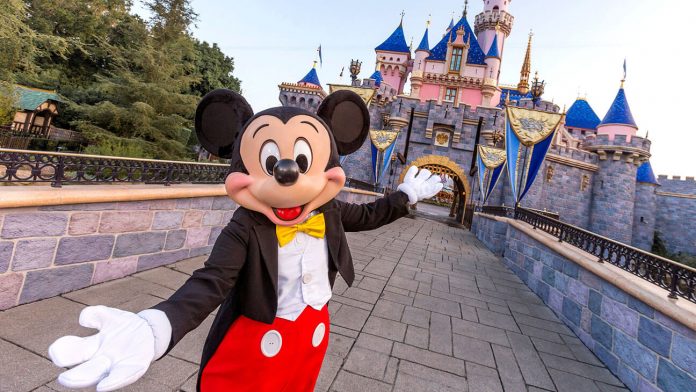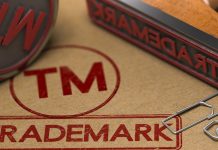This article is written by Priyal C Bhalerao, pursuing Certificate Course in Arbitration: Strategy, Procedure and Drafting from LawSikho.
Table of Contents
Introduction
“Mickey Mouse” was one of the most famous cartoon characters in the world during the 20th century. It has remained the figurehead of the Walt Disney Company (“Disney”) for almost nine decades. Disney holds both a copyright and a trademark for Mickey Mouse (The Mouse). Apparently, the Mouse has become synonymous with copyright term extension, featuring on apparel and household goods sold around the world. Protecting key pieces of intellectual property can involve lengthy and expensive litigation. Thus, giving rise to intellectual property disputes between various corporations and individuals. Due to the globalization of trade, trademarks are used for various types of goods and services, thus leading to the internationalization of trademarks. Even Disney has expanded its brand to global markets, which has certainly led to a surge in trademark infringement and counterfeit productions in the global market. The article addresses how Disney can solve the Mickey Mouse issue with help of arbitration, by examining the nature of international trademark disputes.
Trademark disputes
A trademark is an identity used to distinguish one good from other goods in commerce. The trademark law prevents the unauthorized use of trademarks by distinguishing them from the rest and helps people in clearly identifying the source of goods. Trademark law prevents the deception of consumers as well as protects the goodwill of the trademark owner. The Walt Disney Company is associated with Mickey Mouse and not with Walt Disney’s original cartoon character, Oswald the Lucky Rabbit, due to the constant association between the company’s name and the Mouse. Trademarks such as Mickey Mouse are widely successful due to their unique mark which clearly associates a product with the brand name of Disney.
In order to bring a prima facie case for trademark infringement, a party must prove that the infringing mark is used in commerce and such use can lead to a likelihood of confusion in consumers. Traditionally, litigation was the only method available for parties to enforce trademark rights. The disputes arising from a global perspective in relation to trademarks can be arbitrated in a more time and cost-efficient manner than in litigation at national courts as such cross-border litigation is both lengthy and costly. Eventually, with globalization, the process of going through litigation has increased the difficulty for trademark holders who are seeking to enforce their rights. Hence, Alternative Dispute Resolution (ADR) is proving to be the most efficient mechanism as an alternative to litigation.
Generally, the disputes brought to arbitration in relation to trademark include disputes arising from licensing, trademark assignments, franchising and distribution agreements. Trademark infringement and trademark validity issues may be arbitrated where the arbitration is based on a submission agreement concluded by the parties after the dispute has arisen. The Paris Convention for the Protection of Industrial Property (Paris Convention) and the Agreement on Trade-Related Aspects of Intellectual Property Rights (TRIPS) obligate parties to the Paris Convention and members of the World Trade Organization (WTO) to provide minimum standards of protection for trademarks and other pieces of intellectual property. It is essential to determine the applicable laws which will govern their dispute. Especially when parties decide to use arbitration, wherein there are a variety of procedural rules depending on the appointed arbitral institutions.
Arbitration as a resolution mechanism to solve Disney’s Mickey Mouse issue
Arbitration is a procedure wherein a dispute is submitted to one arbitrator or a panel of arbitrators by agreement of the parties, who renders a binding decision called an “award”. The internationalization of many companies as in the case of Disney can make it harder for the companies to fight against infringement. The use of international arbitration as a remedy to traditional litigation can emerge as an effective mechanism. Subsequently, though parties often include an arbitration clause in their agreement, all types of disputes may not be covered by such a clause. Furthermore, the courts of the United States are in favour of arbitration and have repeatedly determined that if two parties to a trademark dispute have agreed to comply with the arbitration for any claims arising under the terms of the contract, the dispute can be arbitrated. Thus, the use of arbitration can prove favourable for Disney to solve the case of Mickey Mouse. Following are various advantages of arbitration as a preferred dispute resolution method.
Speed and cost
Arbitration enables parties to appoint third-party neutral/s by limiting the scope of discovery, who has expertise in the relevant subject matter, which can substantially reduce the cost and time. If a dispute concerning the subject matter is covered by trademarks in several jurisdictions, it can be resolved by arbitration in a single arbitral proceeding. A provision can be entered in the arbitration clause for preventing parties from dragging out the dispute, thereby ensuring a decision to be rendered within a specified period of time. Thus, arbitration can prove to be cost-effective and speedy dispute resolution for Disney.
Flexibility in procedures
Arbitration is an amicable method of resolving disputes, which does not require any stringent lengthy procedure. The Supreme Court of the United States has repeatedly affirmed that public policy favours resorting to Alternate Dispute Resolution methods for settlement of disputes. Its ability to rapidly and inexpensively resolve disputes makes any intellectual property disputes befitting of resolution through ADR. As IP disputes are lengthy and at times involve very complex legal and technical issues, the arbitration allows for a more informal and efficient settlement of disputes. It allows for the reallocation of a company’s time and resources to more important tasks. Perhaps the process of arbitration can be customized to meet the needs of the parties involved to settle trademark disputes. The parties can choose from varied forms of ADR—negotiation, arbitration, or mediation for resolving disputes before potential litigation.
Selection of forum
Arbitration is a contractual agreement between two parties to settle a dispute. In a majority of cases, the international arbitration proceedings arising from a prior arbitration clause or an agreement so as to arbitrate a dispute, if one arises. The agreement binding parties to an arbitral agreement also binds them to its outcome. The parties can choose a neutral jurisdiction for the conduct of the arbitration. The prior agreement by the parties ensures that awards may be enforced in countries that have signed the New York Convention. Accordingly, arbitration protects parties from the unpredictable awards of a jury, which can often be exorbitant even to those unfamiliar with trademark disputes. The relief sought in trademark disputes is an injunctive relief, which is usually dispensed by judges but can be awarded by the arbitrators appointed by the parties to the dispute.
Privacy
The trademark disputes often involve trade secrets and other proprietary information, which the entities may wish to keep secret in order to protect the value of licenses not involved in the issue. The private nature of arbitration can keep the information confidential if the parties desire. For many businesses, it is important to protect the subject matter of a dispute from being published in news channels so as to maintain positive public relations. The public image of the company could be severely damaged by the details of an infringement involved in the dispute. Disney is already known to engage in frivolous trademark protection litigation. Thus, arbitration can help maintain the confidentiality of such disputes as in the case of Disney, by preventing the spread of negative publicity.
Injunctive relief
Injunctive relief is generally sought in trademark disputes. The use of a certain trademark in relation to the goods or services and an identical or similar trademark (Mickey Mouse) may lead to reputational risks for the company (Disney). It can lead to the dilution of the trademark, harming its perception by consumers and resulting in blurring. This may cause a decrease in the distinctiveness of Disney’s trademark, which may serve as a ground for trademark revocation. Apparently, in many jurisdictions such as the Netherlands and Germany, obtaining injunctive relief before the state courts is feasible. Various arbitration rules provide for such an opportunity, like under the WIPO Rules, wherein, the urgent interim relief is available within emergency relief proceedings applicable to arbitrations conducted under arbitration agreements.
Conclusion
The success of Mickey Mouse as an internationally recognized trademark, the endeavour to protect its trademark. Due to the internationalization of the business of Disney, there is an increase in trademark infringement. The nature of trademark and its infringement disputes shall be taken into consideration while determining how this dispute can be settled through litigation and arbitration. Trademarks are an integral part of the identity and success of many companies. The trademarks such as Mickey Mouse are recognized throughout the world as symbols of the accomplishment of a given brand. As trade has become more globalized, protecting trademarks can help strengthen business relationships.
The article has enunciated the use of arbitration in resolving the issue of Disney with regard to Mickey Mouse. Furthermore, it sought to demonstrate that using arbitration to settle international trademark disputes can be beneficial to both parties to the dispute. Eventually, arbitration may not be the best method for the resolution of all international trademark disputes, but it is important for parties to consider arbitration as a viable option for the resolution of the conflict.
References
- https://scholarship.law.missouri.edu/cgi/viewcontent.cgi?article=1811&context=jdr
- https://www.mondaq.com/southafrica/copyright/367492/solving-the-mickey-mouse-copyright-problem
- https://www.worldtrademarkreview.com/why-arbitrate-international-ip-disputes
- https://globalarbitrationreview.com/guide/the-guide-ip-arbitration/first-edition/article/patent-copyright-and-trademark-disputes
Students of Lawsikho courses regularly produce writing assignments and work on practical exercises as a part of their coursework and develop themselves in real-life practical skills.
LawSikho has created a telegram group for exchanging legal knowledge, referrals, and various opportunities. You can click on this link and join:












